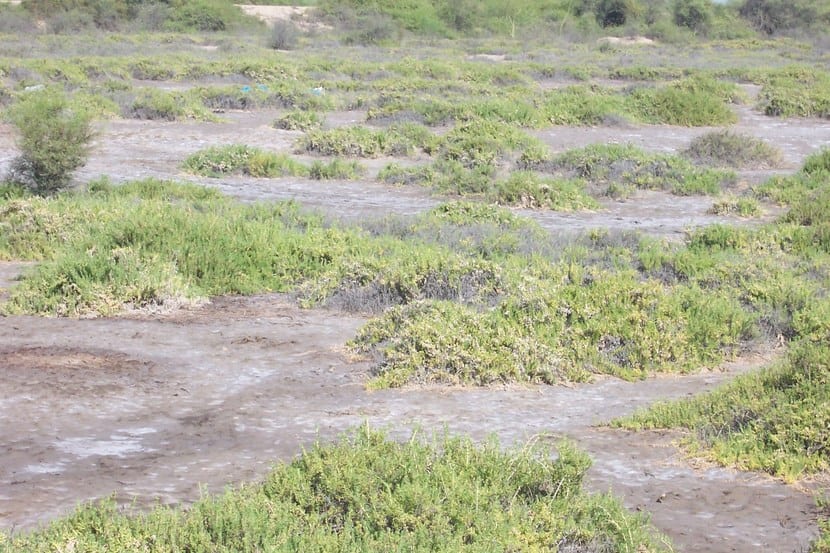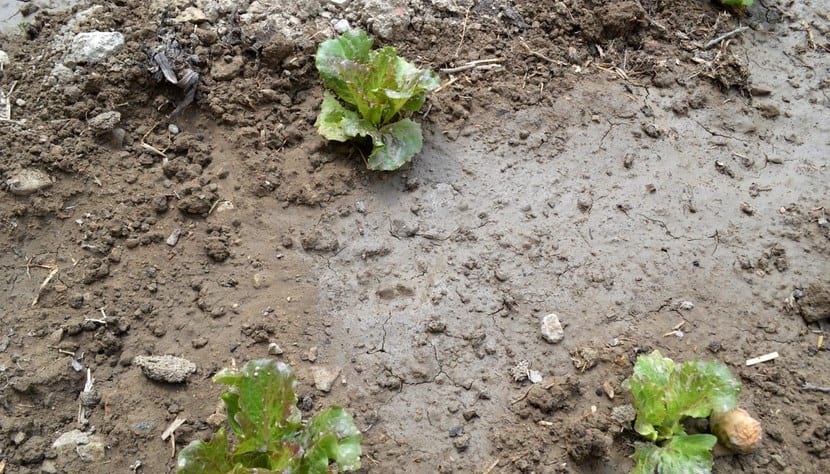
In the world there are different types of soils and each of them has unique characteristics that must be paid attention to in gardening. The soil determines the specific needs of plants and even limits the species cultivated.
But this is not the only thing, the different types of dreams also determine the tasks that we will have to carry out outside doors because if we grow plants that are not suitable for the characteristics of a soil we will have to carry out additional work to adapt the soil to the needs of that plant.
Alkaline soils

Among the existing types of soils, today we will stop at one that is very common to find: the alkaline soil. Here we speak of that soil that is diametrically opposite to acidic soil, it is a sweet soil to which few plants are adapted and that is why it is necessary to know if we have this soil in our green space in order to take the necessary precautions.
Alkaline soils are somewhat treacherous as they lead plants to suffer from iron chlorosis, that is, to a deficiency in iron, something that is noticed because the leaves turn yellow and then fall.
To establish the PH of the soil you only need a PH measurement kit, which you can get at any nursery or garden store. If the result is 7 upwards, you are facing an alkaline soil since 7 is a neutral PH, that is to say a neutral soil and below that and up to -7 we speak of an increasingly acidic soil.
In the case of having alkaline soil in the garden, you can grow fuchsias, zinnias, boxwood, clematis wallflowers, fig trees, tulips and a garlic plant because these crops adapt without problems to these sweet soils.
Salty soils

What about the salty soilsyes? First of all, let's define what they are like. This type of soil is related to the soil salinity, that is, the amount of salt they present. It is difficult for plants grow in soils with a very high salinity as then the roots cannot absorb the water, which leads to the edges of the leaves to dry out and turn brown.
But the good news is that there are a few species that can survive in salty soils or with higher than average salinity. This happens with a variety of trees and shrubs such as acacia, rosemary, heather, laurel, carob, cypress, olive, pomegranate and eucalyptus. Others that you can consider are the date palm, heart of palm, bougainvillea, passionflower, kalanchoe, chrysanthemums, bunnies and geranium. And an extra bonus if you like aromatic plants? The lavender and verbena.
Thank you ... Very interesting. What is the most suitable pH, 9,11,14 ???, Greetings from Guate. Fm
Hello Hector.
It will depend on each plant. There are some, like Japanese maples, that want a pH of 4 to 6, but there are others like the almond tree that only grow in soils of 7 to 8.
If you have questions, please write to us.
A greeting.
Thank you, the information will be very useful for our project!
Hello Ramon.
Good, that project is great!
regards
you should correct your post. ph levels range from 1 to 14 where 7 is neutral
Lavender does not resist salinity, they died when some water fell from the water softener.
Hi loneliness.
Lavender is widely planted in coastal gardens, for example here where I live in Mallorca (Balearic Islands, Spain).
What does not resist is excess water. Also when watering you have to wet the soil, not the plant, as it will otherwise spoil.
If in doubt, write us again 🙂
Regards!
My land is salty and alkaline is close to the sea, I want to make a living fence, I hope to see my plants grow with your help I will put your recommendations into practice
Thank you.
Thanks to you, Nelly.
If you have any questions, here we are.
regards